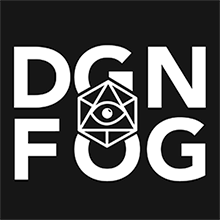"One look at the Nether scroll and I've learned what a spell is. I've been collecting spells as if every one were different. That's illusion...spells are all the same. They're all a path through illusion to truth. One look, and I've seen the fundamental truth of magic."
Netheril was an ancient, magocratic human empire of Faerûn, whose influence was felt across the Realms for thousands of years. The Netherese people lived in a strict hierarchy for hundreds of years, split into the nobles of High Netheril, living in flying enclaves miles above Toril, and the commoners of Low Netheril settled in demesnes on the coast of the Narrow Sea.
The empire was the pinnacle of human civilization during the first half of the Age of Humanity. Although they had humble roots as mere fishermen and farmers, the Netherese were introduced to the Art by the elves of Eaerlann, and came to harness this arcane power in ways that would shape Toril for generations. Over the next thousand years they discovered the long lost Nether Scrolls, developed the creation and use of mythallars and created the first of their flying cities, Xinlenal. The arrogance of Netheril grew to the point where they attempted to attain the divinity of magic, and wound up destroying the Weave. In the resulting maelstrom, the Faerûnian pantheon was altered and most of the flying cities of Netheril came crashing to the earth. But more on that later, for now let us focus upon the great mysteries of The Scrolls themselves.
The Nether Scrolls, originally known as the Golden Skins of the World Serpent, was the name given to one set of fifty scrolls that dealt with fundamental magic theory. It was paired with a second set that was transformed by the elves of Faerûn into the Quess Ar Teranthvar, or the Golden Grove of Hidden Knowledge, the magical tree to which The People could attune. Unlike the elven tree, that was only stolen once, the Nether Scrolls that always remained in their original form had been continually lost, stolen, and even partially destroyed throughout the course of five millennia.
The Nether Scrolls were a set of small scrolls that described fundamental magical theory. Two sets were known to exist, one set older and more tarnished than the other.The contents were written over fifty scrolls divided into five chapters, each consisting of ten scrolls. Each scroll was made of a precious metal, namely gold or platinum, made flexible like paper with silvery letters floating upon the surface. Each time a page was read, new knowledge appeared, allowing the scroll to contain more information than the small size should have allowed.
While the Nether Scrolls had no direct magical powers, they provided a vast body of supply of arcane knowledge. Normally for most readers It would take eight hours of study a day, for three tendays in order to even begin to comprehend the contents of a single scroll. When a reader gained sufficient understanding, re-reading the scrolls provided additional knowledge and information. There did not seem to be any limit to the amount of information one scroll could contain, although the amount of knowledge contained wasn't endless, it would still require an entire month to read through.
No destructive magics, even disintegration could affect the scrolls. They could be physically altered to the point of being unrecognizable, but would always reform themselves eventually.
Finally, the five known chapters of the Nether Scrolls were:
- Arcanus Fundare
- The chapter "Foundations of Magic" was about fundamental magic. It gave the reader an instant boost to their spells' effectiveness and magical skill matching and/or surpassing that of true masters, but no additional base magical power.
- Magicus Creare
- The chapter "Spells of Creation" was about magic item creation. Reading it provided the user with the ability to create new magic items and the ability to create any magic item with less expenditure of one's essence.
- Maior Creare
- The chapter "Major Creation" dealt also with the creation of magic items but with the focus on constructs. It made the reader not only understand how to create constructs but also how to reliably create them at top quality without any fluctuation.
- Planus Mechanus
- The chapter "Studies of the Planes" dealt with the planes and allowed the reader to use plane shift and not suffer any negative effects from other planes' environments.
- Ars Factum
- The chapter "Of the Creation of Artifacts" Its contents were unknown, though naturally it was suspected to deal with making artifacts. This chapter's scrolls required some kind of key to be read, but it was never discovered.






